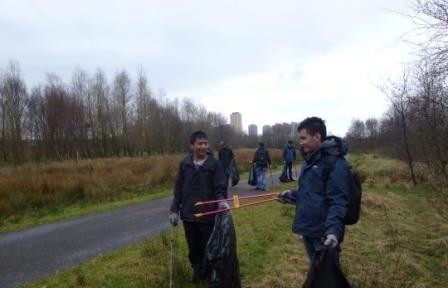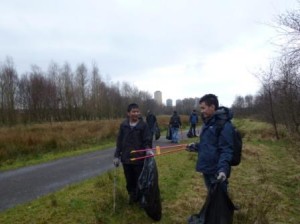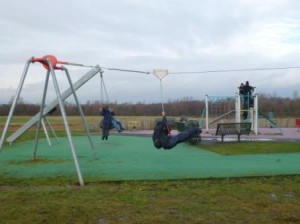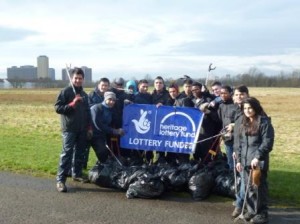
Well, I’m here in the BTCV Scotland Office in Stirling on my last day as a Natural Communities Trainee, and it’s been a long, fun and interesting year to say the least! The people I’ve met along the way (BTCV and partner organisation colleagues, training workshop participants, volunteers and many members of the public) have helped me to do exactly what these traineeships promised: learn skills in environmental community engagement. The experience gained in this past year, combined with that of previous work, has helped me to gain employment as the ranger on the Scottish Wildlife Trust managed Handa Island, an internationally important seabird colony off Sutherland’s west coast.
My final work here has been to initiate, organise and half-deliver a series of “Discovering Nature” educational conservation sessions for a group of young, unaccompanied asylum seekers who are studying English as a Second Language at Anniesland College in west Glasgow. Alongside their English classes, this group of friendly and happy youths are undertaking their John Muir and ASDAN Awards, which have a large component of environmental and wildlife conservation in their syllabuses. After meeting with their teachers, I began the long process of organising a series of fun and exciting outdoor events which will help the students to complete these awards, as well as helping them to improve their English skills and, most importantly for me, introducing them to the Scottish countryside and our wildlife. We have already met for 2 mornings of practical conservation work, and I have planned a further three, more educational, sessions which will introduce them to Scottish invertebrates, birds, mammals and plants.
Our first practical day (Wed 22nd February) saw us joining in with volunteers from the BTCV Glasgow mid-week group and Glasgow Council Biodiversity Officers to improve some of the more natural habitats in Hogganfield Park. We planted thousands of native saplings to create a copse in the future, raked up cut grass to encourage a wildflower meadow, and removed windblown deadwood to make invertebrate habitat piles. Catherine and Keith, from Glasgow Council, were very impressed with all of the hard work that was put in by the Anniesland students (and Amanda and me, obviously…).
Our second day (Wed 29th Feb) of tasks was a little bit less exciting, but still very useful to Glasgow. We spent a morning picking wind-blown litter from among the birch and alder woodland of Robroyston Park. 20 of us collected nearly 40 full bags of litter in 2 hours! Whilst in the park we saw a small group of Roe Deer, six herons (probably waiting for the frogs to come to the pond), and courting birds, along with various other signs of spring. After the hard and dirty work, these youths (many from war-torn countries, such as Afghanistan, Iraq and Somalia) spent an excitable 15 minutes playing in Robroyston’s adventure playground. And there wasn’t a bottle of Buckie in sight (as we’d picked them all up…)!
Three more excursions are planned, with a more educational focus: Bugs and Birds at Pollok Country Park, Spring Plants at Linn Park, and a day trip to David Marshall Lodge in Aberfoyle. Unfortunately, I will not be attending these, but Amanda Joaquin has generously offered to absorb these into her many other responsibilities this year. Thanks Amanda!
Finally, I’d like to extend my thanks to BTCV Scotland (especially Anthony Morrow, John McFarlane and Kerry Riddell) for providing me with the opportunity to learn as much as I have this year and the Heritage Lottery Fund for financing that learning! I doubt that I would have got my next job on Handa Island without the experience of this year.
Thanks everyone and goodbye!



